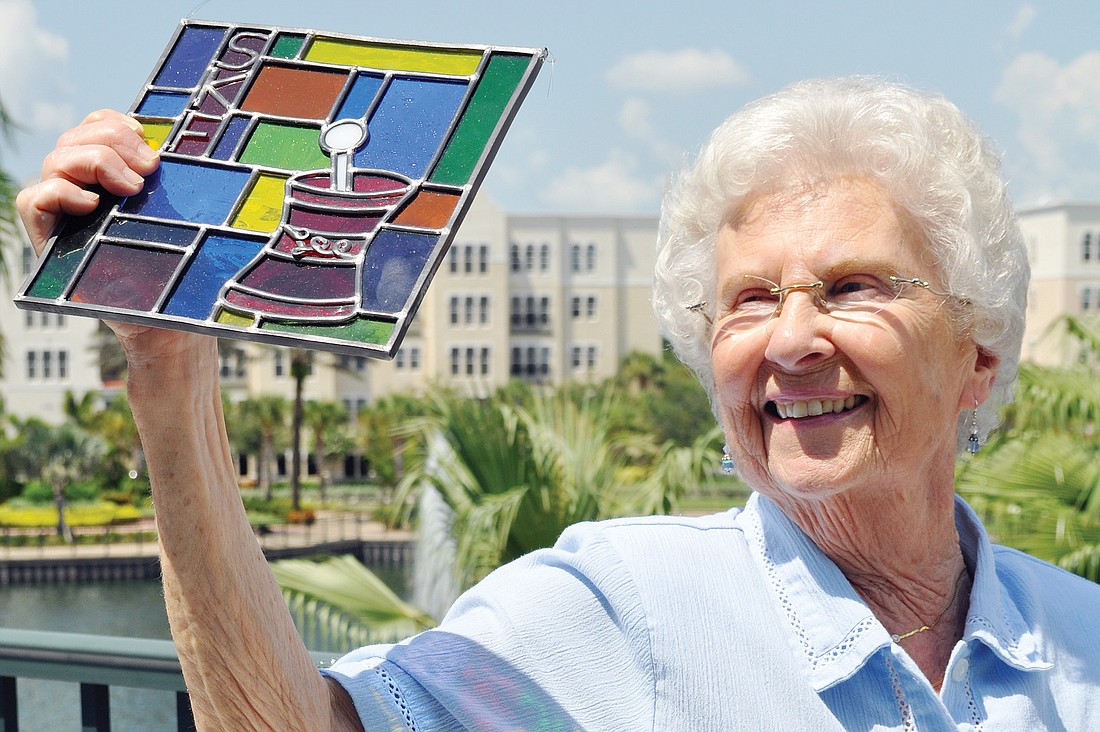- November 28, 2024
-
-
Loading

Loading

Grace Greene was afraid to score her first sheet of glass. Worrying she would cut her hands to pieces, she felt her heartbeat slow down when the instructor presented her with some protective armor.
But it didn’t take long before Greene found the armor — heavy-duty gloves — cumbersome, and she noticed they limited her creative control over the design. So, she nixed the gloves.
“I loved it,” Greene, 82, says. “I took to it like a duck to water. I think you have to actually come to the conclusion that you’re not going to let the glass get the better of you — you’re going to get the better of it.”
It was during a European adventure with her husband 50 years ago that Greene first recalls being enamored by the stained-glass windows in the many breathtaking cathedrals that they toured.
“That got me going and sparked my interest in stained glass,” Greene says. “I took the first course in 1968 at the Moorestown, N.J., YMCA, and the couple teaching it was a barrel of fun. I took three courses from them and then was pretty much on my own.”
Greene became so infatuated with the hobby that she would put her children to bed at night, head down to the basement and work until 1 a.m. She would come up with new patterns by scanning children’s coloring books and greeting cards. Throughout the years, she has created a series of sports figures for her grandchildren, a mirror for her parents’ 50th anniversary, a nativity scene and a fisherman and palm tree on driftwood for her husband.
“My Christmas pieces I treasure — especially the nativity scene,” Greene says. “That was a real challenge. I almost lost my religion with that piece.”
She’s learned to create her best pieces through trial and error.
“If you told me to draw a church I couldn’t begin to know how to do it,” Greene says. “But if you show me a picture, I can work from it. Cutting the little, real small or thin pieces are kind of a challenge. You learn techniques — and come up with your own — for doing most of these things.”
Since she started making stained glass, Greene has created 100 patterns and collected glass from all over the world. In fact, her collection has grown so large that The Glenridge on Palmer Ranch has designated an entire storage cabinet to her, where she stockpiles everything.
When she and her husband, Lee, moved to The Glenridge from Turtle Rock a year-and-a-half ago, Greene started teaching her own classes in the community’s art room. In her classes, students learn about the different types of glass, of which 30 to 40 exist today, history on stained glass and tips such as how to add depth to their pieces.
They start out with window glass, which is how Greene learned, begin making simple cuts and curves, and when they feel comfortable, Greene sets them loose with stained glass.
“I love teaching the class — it gives me an opportunity to get to know people better and under different circumstances,” Greene says. “They all end up with something they’re proud of and can take home and keep.”
INSIDE GREENE'S TOOL BOX
Carbide wheel cutter — “I score the glass with this.”
Running pliers — “I put the mark on the score line and break it. I did not have these when I started and they’re helpful.”
Breaking pliers — “They’re common pliers with a snub nose.”
Grinding machine — “This has a diamond wheel. You put water in it and grind the edges.”
Copper foil — “It has a sticky side and a back side. You set the edge of the piece in the center or the foil, then take a Popsicle stick and smooth the foil down over the edges. Tiffany lamps are all made with copper foil.”
Soldering iron — “I use a 100-watt chisel tip that looks like a screwdriver and a 30-watt iron. You solder over the copper, and it becomes a strong edge. You have to apply flux — an acid base — or soldering won’t work.”
Lead came — “This comes in either H- or C-channel and is for joining pieces.”
Flux — “It’s an acid base that you have to apply before you solder or it won’t work.